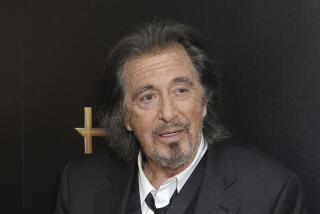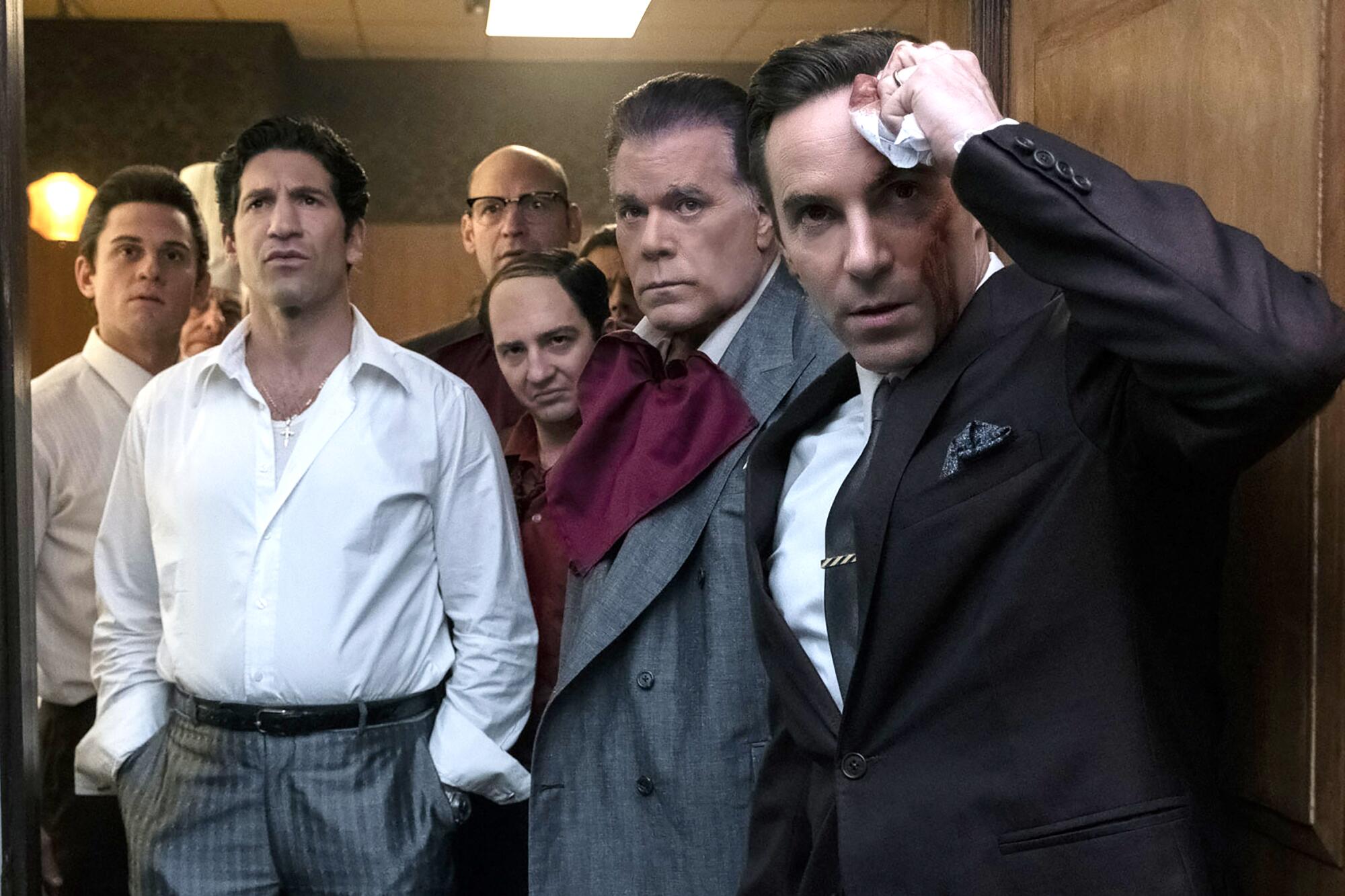
- Share via
As the creator of HBO’s seminal Mafia series “The Sopranos,” David Chase is keenly aware that heavy lies the head that wears the crown. It was mob kingpin Tony Soprano himself who told his consigliere Silvio, “All due respect, you got no f—ing idea what it’s like to be number one.”
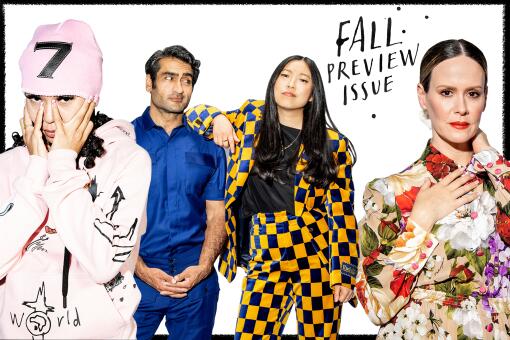
FALL PREVIEW
What to watch, read and listen to this fall: Your ultimate guide
More than 30 ways of looking at the fall season.
Creator and performer interviews.
Recommendations for more than 160 movies, TV shows, video games, music events, books and Southern California cultural happenings.
FULL COVERAGE
Revisiting the series many consider the greatest of all time wasn’t a decision Chase made lightly. He actually resisted it entirely, until conceiving of a feature film prequel — “The Many Saints of Newark,” scheduled to hit theaters and HBO Max on Oct. 1.
“A lot of well-meaning people said to me, ‘Aren’t you afraid you’re going to s— all over the show, this great thing you created?’ ” Chase, 75, says recently over Zoom from his office in Santa Monica. “Of course, I said, ‘I hope not.’ But you feel like punching them in the face. What are you saying that to me for?”
Arriving nearly 14 years after “The Sopranos” finale’s smash-cut to black, the film — directed by series veteran Alan Taylor — is set in the late 1960s, as Newark, N.J., is roiled by racial violence and rival gangs go to war for dominance. Against that turbulent backdrop a young Tony gets an early education in a life in crime as he follows in the footsteps of his mentor, Dickie Moltisanti, a soldier in the DiMeo crime family.
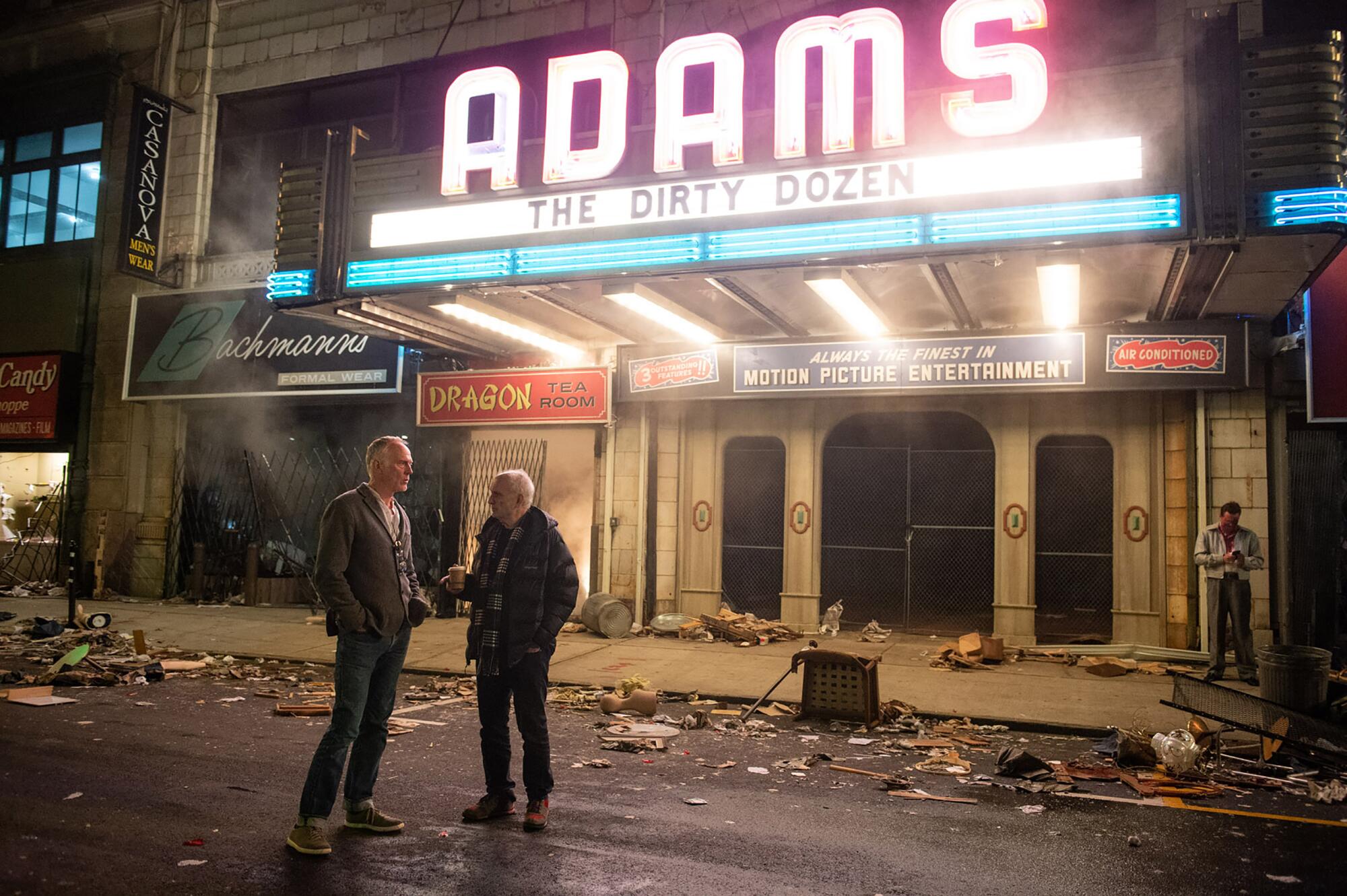
“When I first started ‘The Sopranos,’ what I really wanted to do was to make a really good gangster movie,” Chase says. “And that’s what we wanted to do with this more than anything else.”
The Times spoke with Chase and his producing partner, Nicole Lambert, about how the film’s ensemble reimagined familiar characters beloved by diehard fans and ones that are new to the “Sopranos” universe.
Dickie Moltisanti
Played by Alessandro Nivola
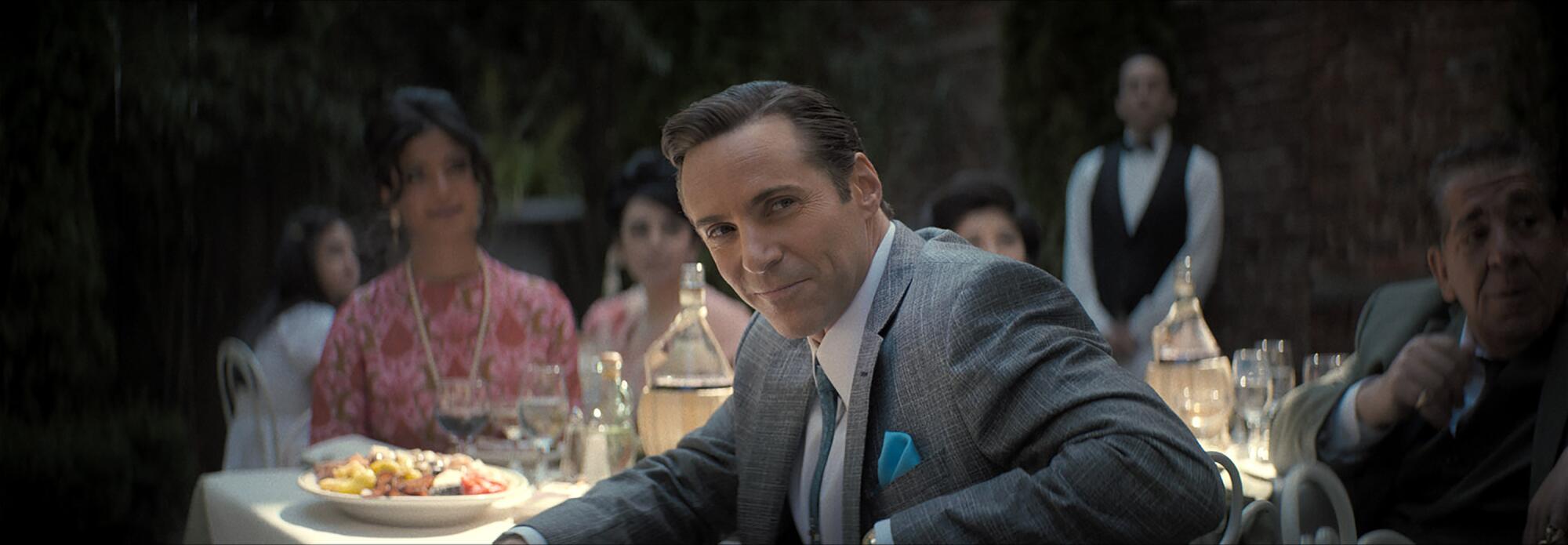
“We could have gone a million ways for a prequel,” says Chase. “But as [co-writer] Lawrence Konner and I were sitting down, thinking, ‘What should we do?’ Dickie Moltisanti came up.”
A Mafia soldier and the father of Michael Imperioli’s pivotal series regular Christopher Moltisanti, Dickie was always a somewhat mysterious figure in “Sopranos” lore. On the show, Tony spoke of him being a mentor, a friend and “a legend.” But details of his life were scant, and fans have long debated whether the story Tony told Christopher of how he died in the 1970s — gunned down outside his home by a police detective — was true.
In centering the prequel on the story of Dickie (the name Moltisanti translates as “many saints”), Chase and Konner saw the opportunity to fill in those blanks and create a portrait of the man who set Tony on his path to becoming a crime boss.
“We knew that we wanted a really tough, dangerous, credible wiseguy — another Tony if you will,” says Chase. “I wrote the episode where Tony tells Christopher [how Dickie died]. It was just interesting to me to expand on that. In a way, the purpose of writing [the prequel] was to find out what happened.”
Nivola had been on Chase’s radar since he’d seen the actor in the films “American Hustle” and “A Most Violent Year.”
“He’s Italian, number one,” Chase says. “That really counts. It shouldn’t — they’re actors — but East Coast Italians have certain details about the way they talk, the way they think, and if that’s missing it’s not as entertaining for me. I thought he was great.”
Tony Soprano
Played by Michael Gandolfini
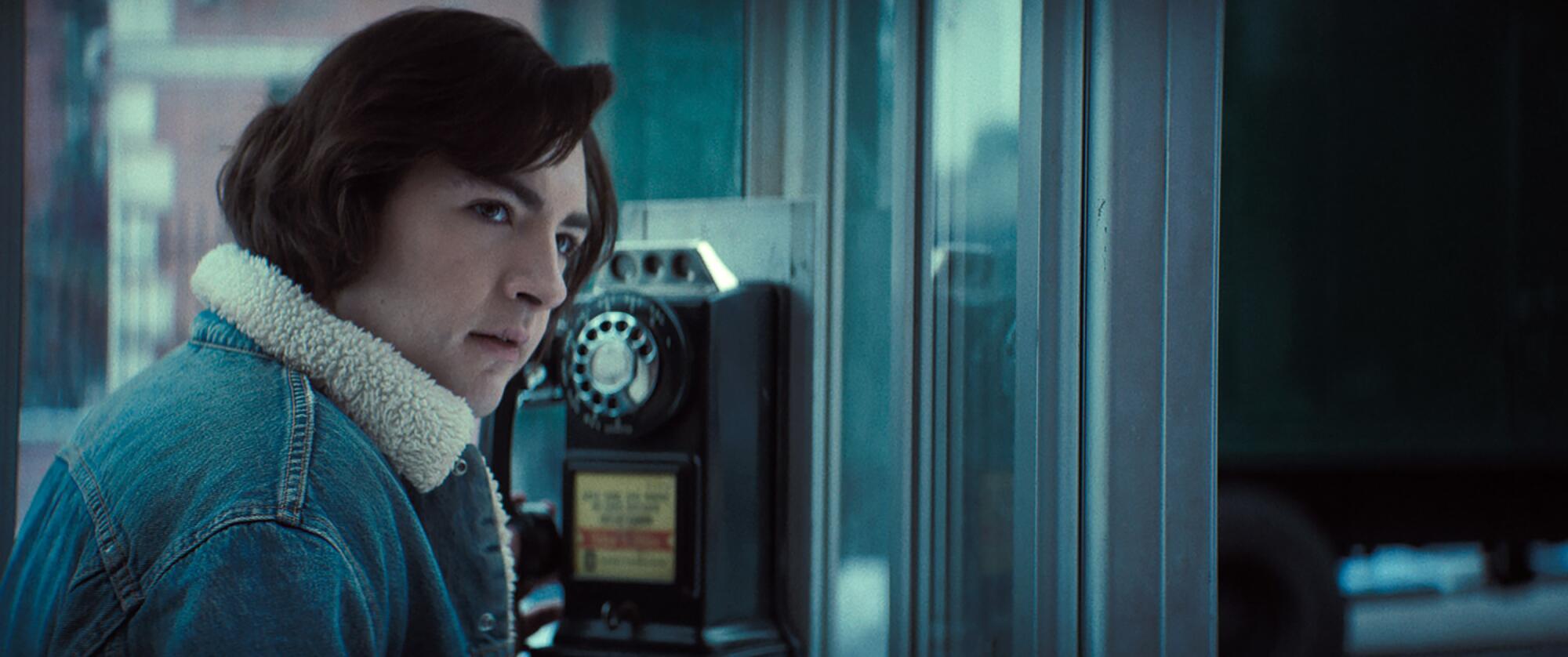
Born in 1999, the year “The Sopranos” began its run, Michael Gandolfini was not necessarily the obvious choice to step into the iconic character played by his father, who died of a heart attack in 2013 at age 51. For starters, he had little acting experience besides a bit part as a busboy in “Ocean’s 8” and a recurring role on HBO’s “The Deuce.” And he had never actually watched “The Sopranos.”
“We went through dozens, probably hundreds, of actors that we read for Tony,” says Lambert. “There were some that were good but there just wasn’t that spark, like, ‘Oh, yeah, that’s the guy.’ ”
After auditioning twice for the role, Gandolfini emerged as not just a good choice but the only choice. Beyond his physical resemblance to his father, Chase was struck by how the younger Gandolfini, who threw himself into an in-depth study of “The Sopranos,” captured the charming side of the future mob boss.
“He had that sweetness and earnestness,” Chase says. “I believe that’s probably why the show was successful. Had Tony just been a terrible, lunatic scumbag killer, I don’t think it would have worked. Jim just had this thing in his eyes, something a little bit sad and boyish.”
Harold McBrayer
Played by Leslie Odom Jr.
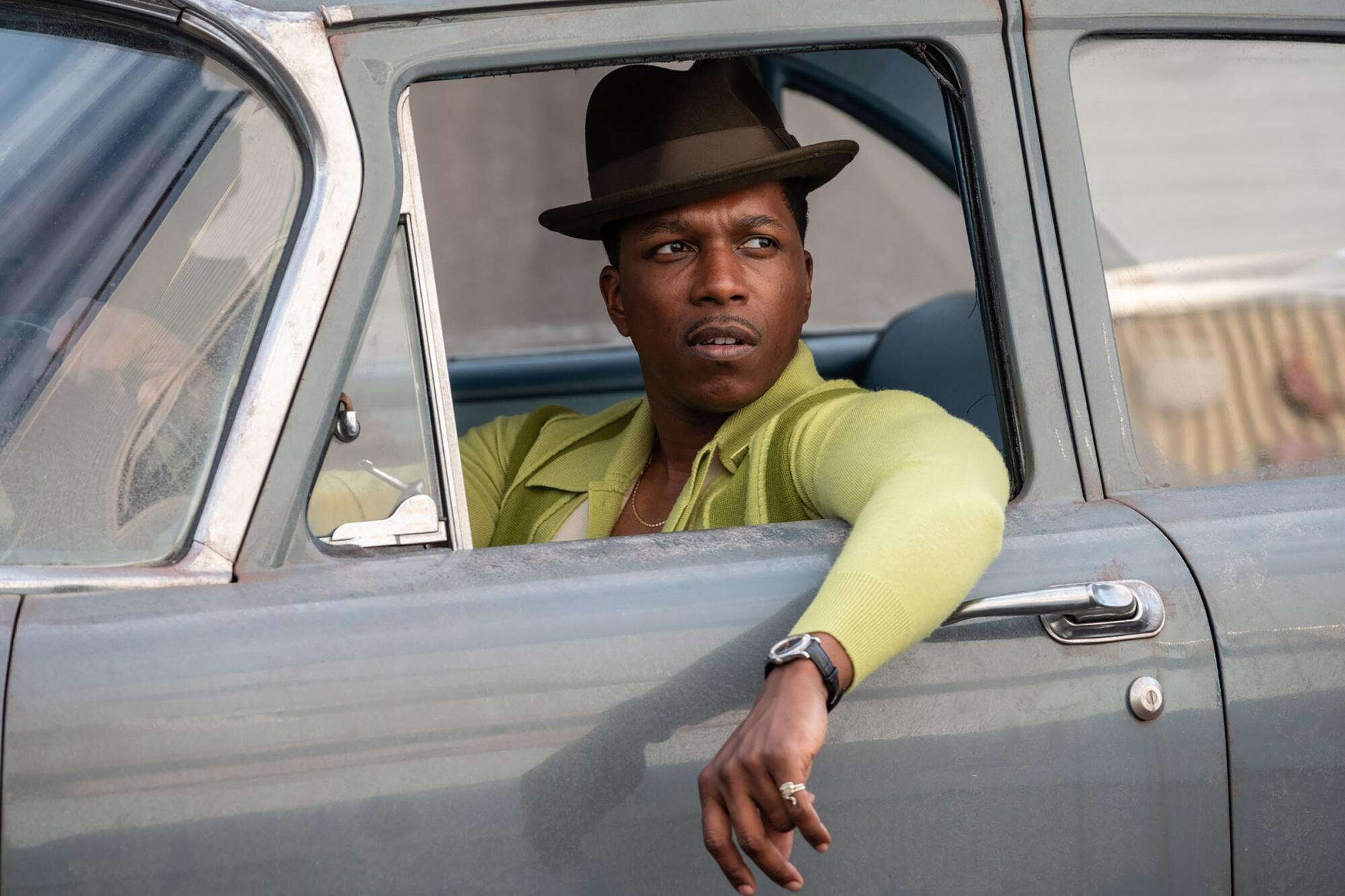
Thorny issues of race had been threaded throughout “The Sopranos,” and in setting the prequel against the backdrop of the Newark race riots of 1967 Chase sought to draw upon his memories of that tumultuous period. In Harold, who starts out as an associate of Dickie Moltisanti but eventually becomes a rival, Chase and Konner created a character who could embody the era’s social turmoil and struggle for racial equality.
It took a while, though, to land on Odom, who broke out on Broadway in “Hamilton” and earned a supporting actor Oscar nomination for last year’s “One Night in Miami…”
“Harold was the hardest role to cast,” says Lambert. “I think we read pretty much everyone who could have been eligible for the role. David had something very specific in his head for that kind of character, a particular energy and a swagger, and Leslie had that. He’s just luminous on the screen. It had to be him.”
Livia Soprano
Played by Vera Farmiga
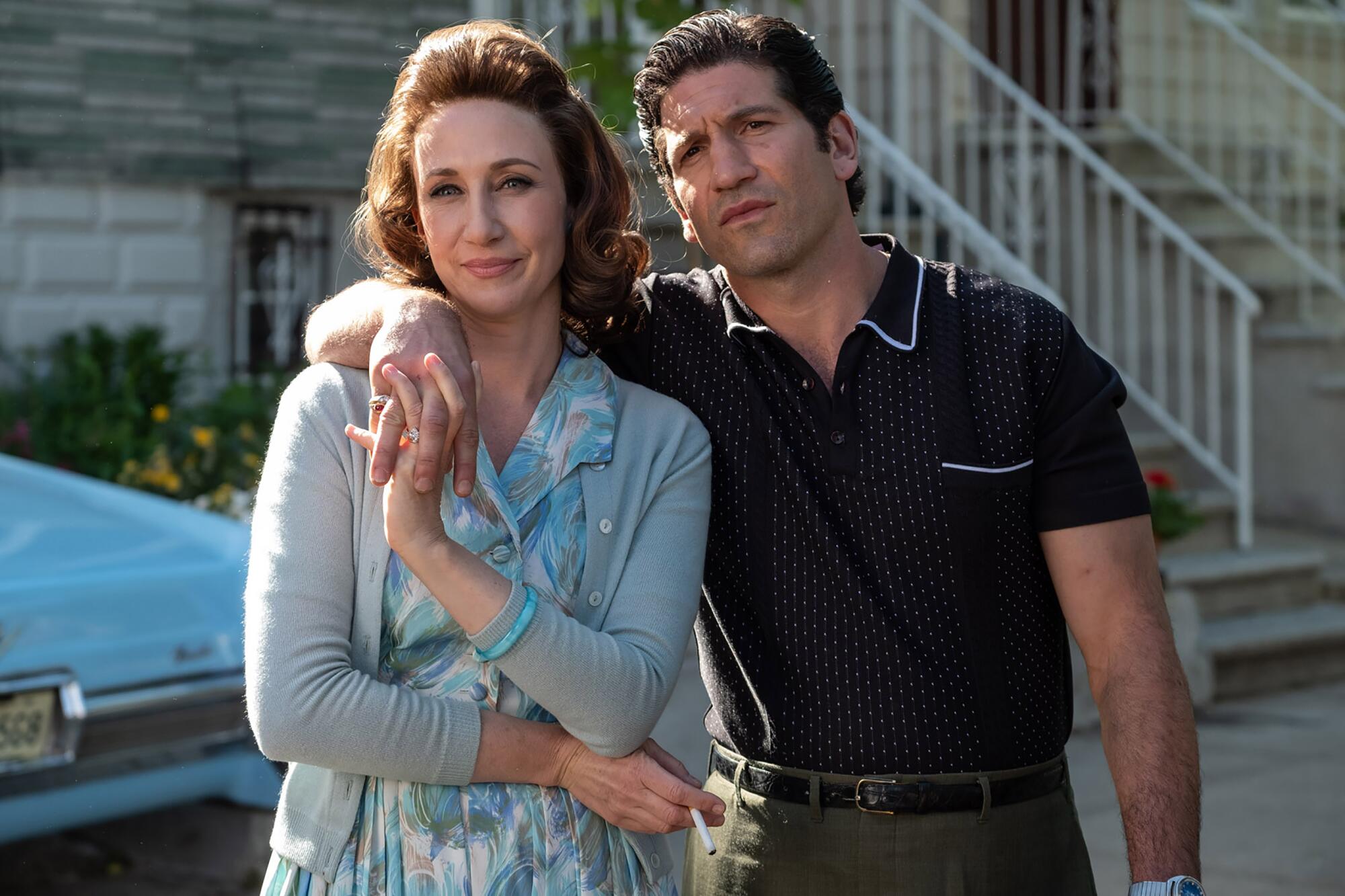
Indelibly played in the original series by the late Nancy Marchand — and based on Chase’s mother — the Sopranos matriarch was a malignant narcissist of monstrous proportions. Delving into an earlier period in the “Sopranos” timeline, Chase relished the idea of exploring the character more fully.
“Who was this girl Johnny Soprano married?” Chase says. “Why did he want to marry her if she was so nuts and she was not a raving beauty? What’s going on there? We wanted to delve into that. Finding the original Livia was very difficult, but casting Vera was a no-brainer.”
Johnny Soprano
Played by Jon Bernthal
Seen in a number of flashbacks and dream sequences during the series, Tony’s father was a well-liked mob captain who spent time in prison when Tony was a boy. (Joseph Siravo, who played him in the show, died earlier this year at age 66.)
In Bernthal, Chase saw an actor who could bring the right combination of menace and charisma to the role. “It’s really always the same thing: Is this somebody who you think can do the job physically?” Chase says. “Is this somebody who can hold a gun and do all that naturally and is also a really good actor? That’s all you’re really looking for, and Jon is that.”
Junior Soprano
Played by Corey Stoll
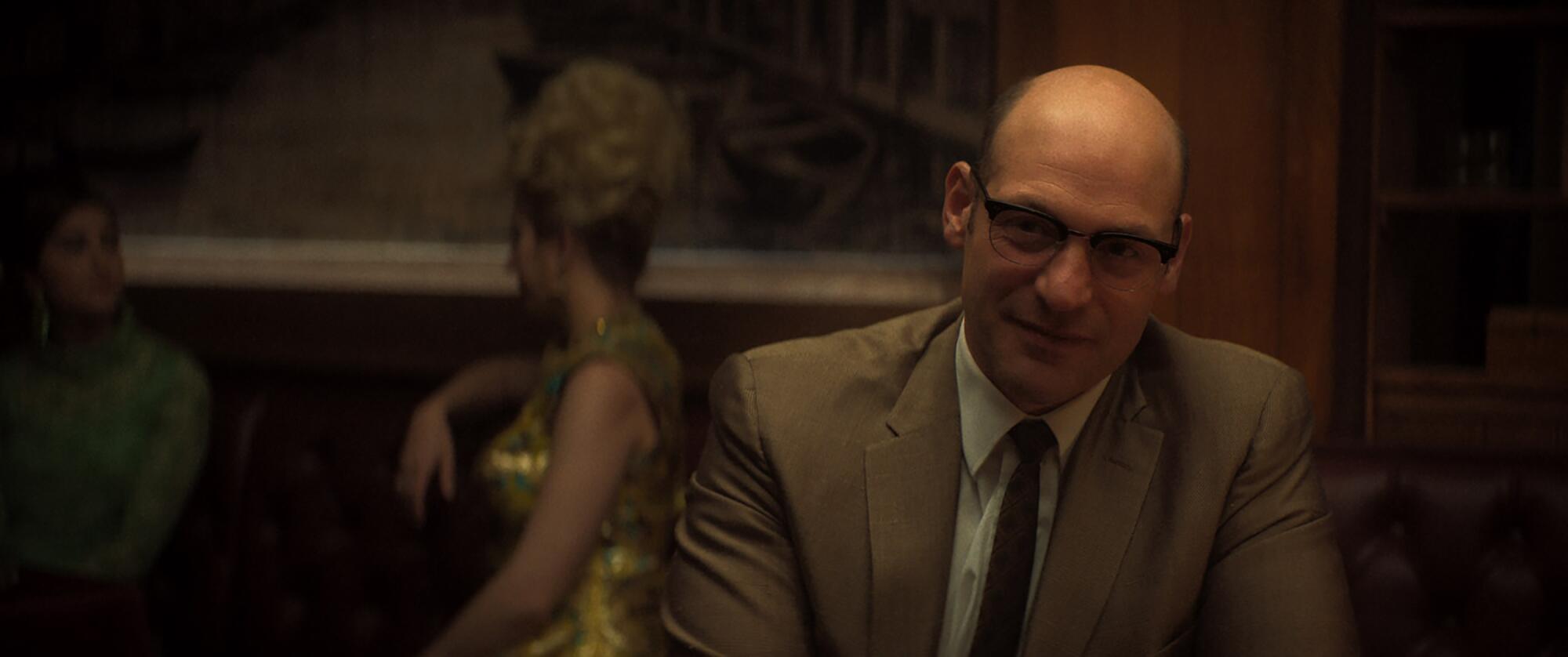
To play Tony’s scheming, perpetually aggrieved uncle, portrayed in the original series by Dominic Chianese, Chase was drawn to Stoll, who had caught his eye on an episode of the Amazon drama series “The Romanoffs.”
Junior has long been one of Chase’s favorite characters. “All the writers loved writing for Junior,” he says. “There was something that Dominic brought to him — the particular way he whined — that made it so wonderful. Both Livia and Junior were great characters because they would say anything.”
Aldo ‘Hollywood Dick’ Moltisanti
Played by Ray Liotta
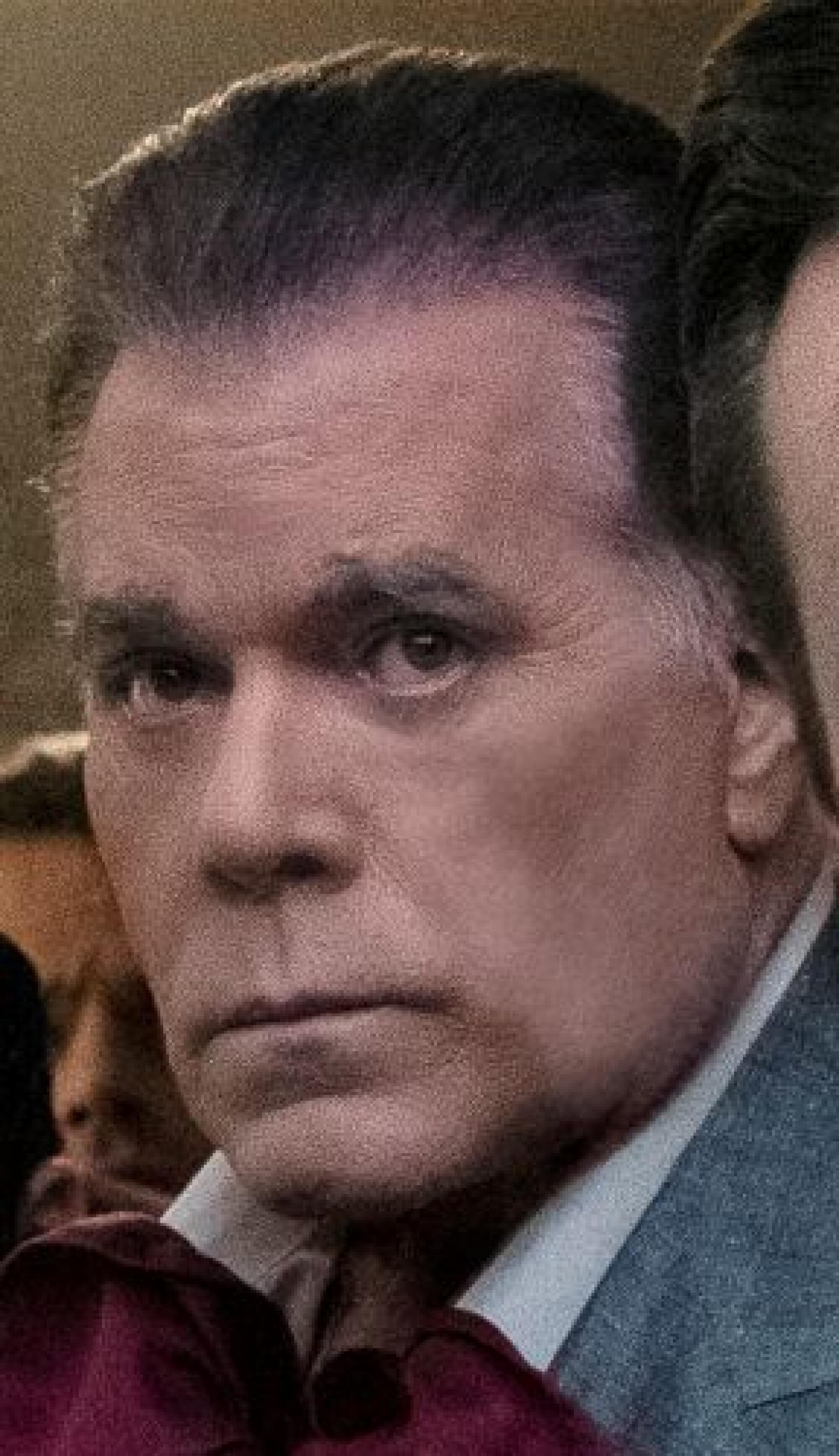
During its six seasons, “The Sopranos” featured a number of actors who had appeared in Martin Scorsese’s 1990 mob classic “Goodfellas,” including Imperioli and Lorraine Bracco (Dr. Melfi). But Liotta was a notable exception — until Chase found a role for him in the prequel as the patriarch of the Moltisanti family.
”I’d had a meeting with Ray when we were doing the show about possibly playing Ralphie [eventually played by Joe Pantoliano],” Chase says. “He ultimately chose not to do it. But I’ve been a fan of his actually since [Liotta’s 1986 breakout] ‘Something Wild.’ Finally, we got him. And he looks like he belongs there — because he does belong there.”
Silvio Dante
Played by John Magaro
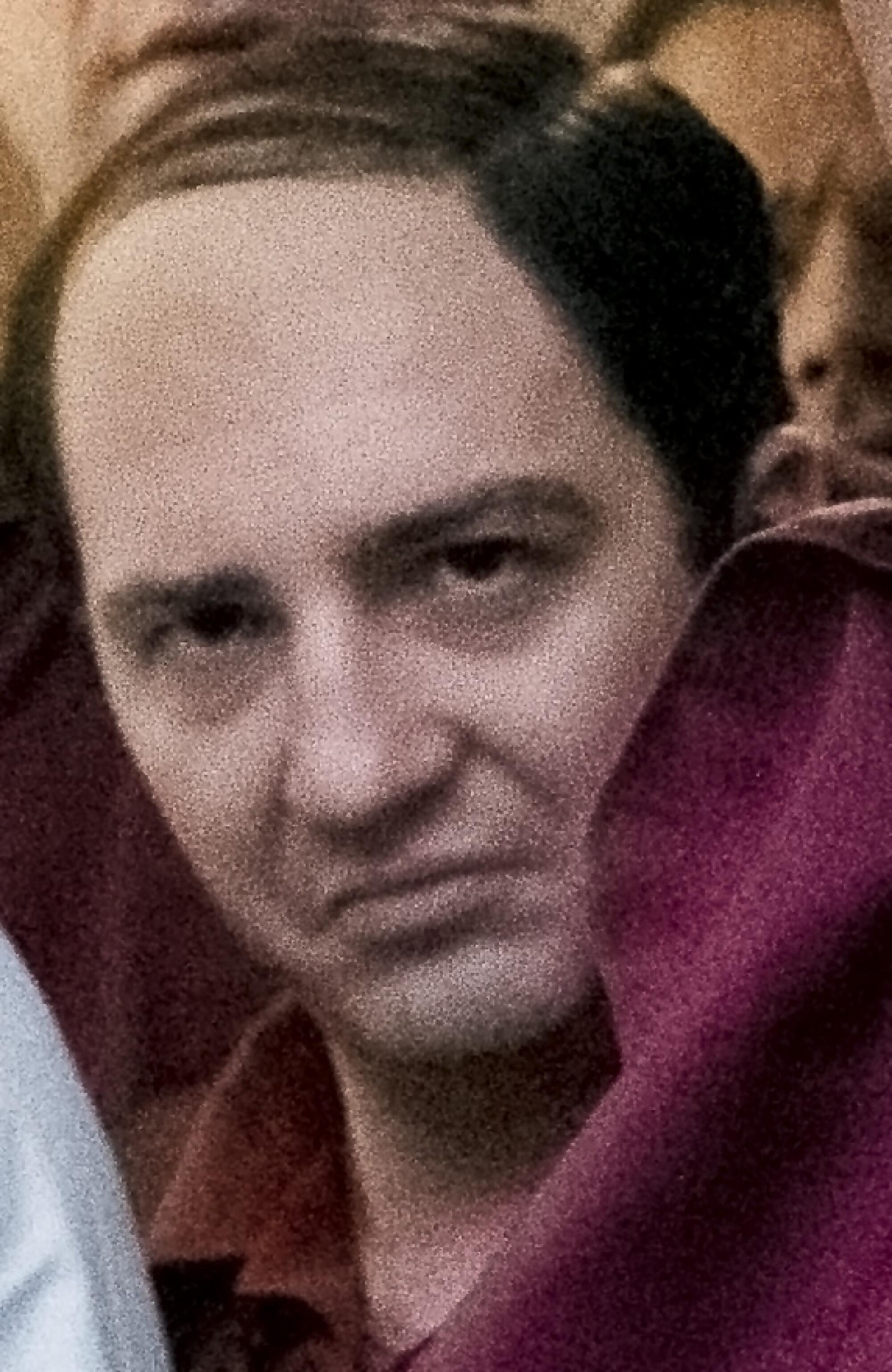
To play the younger version of Silvio — who will later become Tony’s consigliere and manager of the Bada Bing strip club — Chase turned to Magaro, who had starred in his 2012 feature directorial debut “Not Fade Away.” Steven Van Zandt, who played Silvio in the series, served as an executive producer and music supervisor on that film, giving Magaro a leg up in crafting his take on the character.
“I don’t think John copied Stevie so much as he just knew ‘The Sopranos,’” says Lambert. “He has Silvio’s mannerisms down. One of my favorite things in the movie is this moment when John walks in through the door of a warehouse and he does that little shoulder shimmy. He did his homework.”
Paulie ‘Walnuts’ Gualtieri
Played by Billy Magnussen
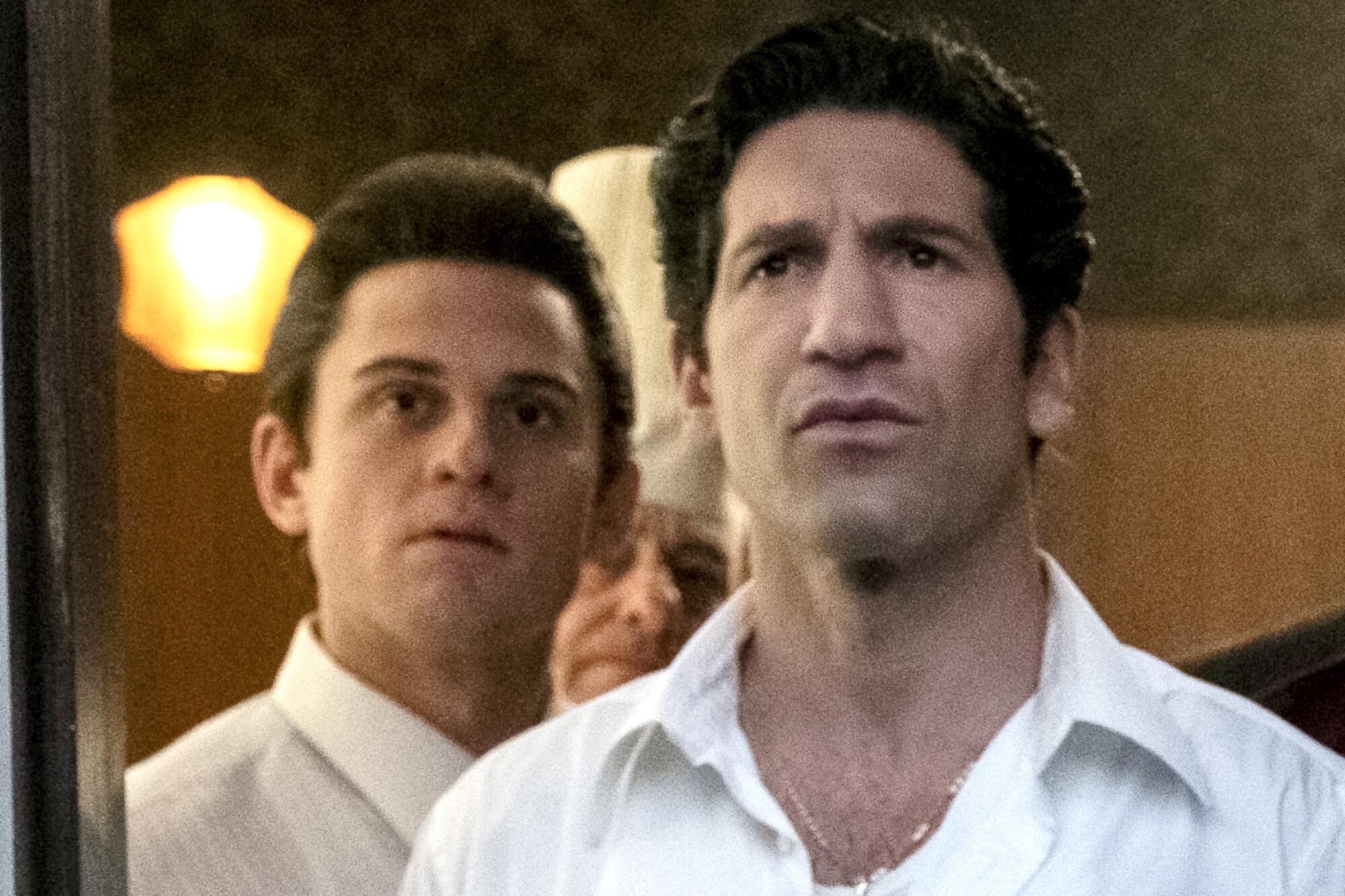
One of the most quotable characters from the series, Tony Sirico’s fastidious and impeccably coiffured capo is also one of the most tempting to impersonate. But in casting the prequel, Chase was adamant that none of the actors simply mimic what their predecessors had done on the show. “That was the mandate,” Chase says. “No impressions.”
Magnussen did avail himself of some recordings of Sirico to help get his distinctive patter down. “Tony recorded some tapes because his little things were so particular and we wanted those to sound accurate,” says Lambert. “But nobody did a caricature of the people who came before. It just felt like a natural sort of progression with them stepping into the world.”
More to Read
Only good movies
Get the Indie Focus newsletter, Mark Olsen's weekly guide to the world of cinema.
You may occasionally receive promotional content from the Los Angeles Times.


